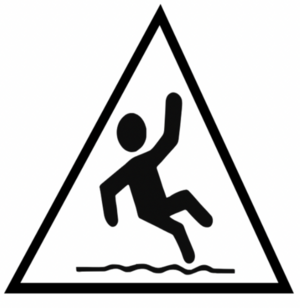The 4-Stage Balance Test
Top Contributors - Gabriele Dara, Lucinda hampton, Admin, Kim Jackson and Shaimaa Eldib
Introduction[edit | edit source]
The Four Stage Balance Test is a validated measure recommended to screen individuals for fall risk. It is based on the persons ability to hold four progressively more challenging positions[1](evaluates static balance).[2]
Watch this 2 minute video to see how physiotherapists can use this test to assess balance.
Intended Population[edit | edit source]
The test is intended to be performed on older adults.[2]
Method of Use[edit | edit source]
Directions - There are four standing positions that get progressively harder to maintain.
1. Stand with your feet side-by-side
2.Place the instep of one foot so it is touching the big toe of the other foot.
3.Tandem stance Place one foot in front of the other, heel touching toes
4. Stand on one foot.[4]
Method us use.
- You should describe and demonstrate each position to the patient.
- Then, stand next to the patient, hold their arm, and help them assume the correct position.
- When the patient is steady, let go, and time how long they can maintain the position, but remain ready to assist the patient if they should lose their balance.
- If the patient can hold a position for 10 seconds without moving their feet or needing support, go on to the next position.
- If not, STOP the test. Patients should not use an assistive device (cane or walker) and they should keep their eyes open[4] [5]
Outcome[edit | edit source]
Not being able to hold the tandem stance (task number 3) for 10 seconds is an indication of increased risk of fall. [2] To reduce their risk of falling, consider implementing gait and balance exercises, or refer them to an evidence-based fall prevention program, for example Otago balance program, Tai Chi.
Reliability[edit | edit source]
Interclass (Pearson) correlations, with time between test and re-test of 3-4 months, 187 subjects from the community) is reported as moderate (0.66) [6]
Validity[edit | edit source]
A robust correlation has been reported when comparing the scale with other measurements for balance, in the same subjects. [6]
References[edit | edit source]
- ↑ National centre of nutrition and aging 4 stage balance test Available from:https://nutritionandaging.org/4-stage-balance-test/#wbounce-modal (last accessed 16.10.2020)
- ↑ 2.0 2.1 2.2 Phelan EA, Mahoney JE, Voit JC, Stevens JA. Assessment and management of fall risk in primary care settings. Medical Clinics. 2015 Mar 1;99(2):281-93.
- ↑ CDC.4-Stage Balance Test . Available from: https://www.youtube.com/watch?v=VUq6IgQAVJM [last accessed 6/6/2009]
- ↑ 4.0 4.1 CDC 4 stage balance test Available from: https://www.cdc.gov/steadi/pdf/4-Stage_Balance_Test-print.pdf (last accessed 16.10.2020)
- ↑ Gardner MM, Buchner DM, Robertson MC, Campbell AJ. Practical implementation of an exercise‐based falls prevention programme. Age and ageing. 2001 Jan 1;30(1):77-83.
- ↑ 6.0 6.1 Rossiter-Fornoff JE, Wolf SL, Wolfson LI, Buchner DM, FICSIT Group. A cross-sectional validation study of the FICSIT common data base static balance measures. The Journals of Gerontology Series A: Biological Sciences and Medical Sciences. 1995 Nov 1;50(6):M291-7.







